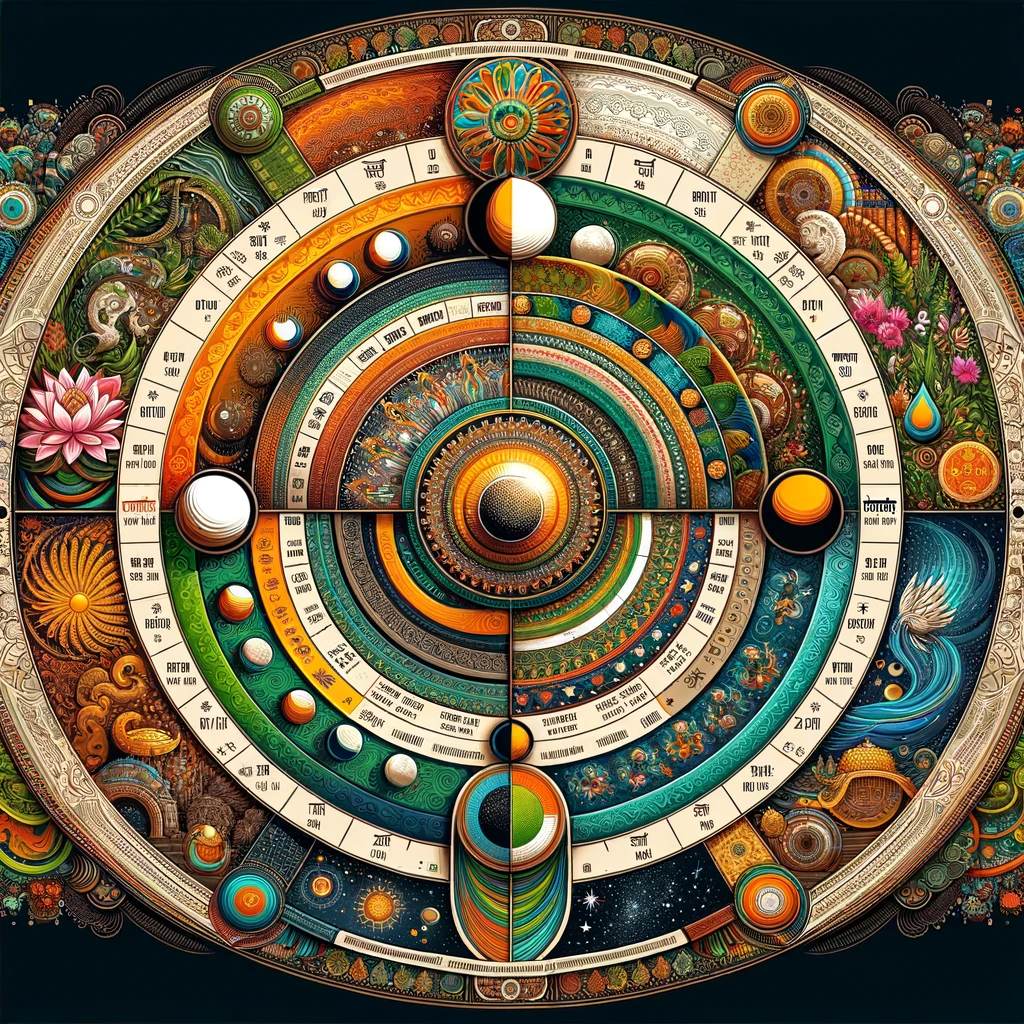On This Day 28 February 2024 Wednesday
On This Day, Sam Vikram: 2080 Purnimanta Mass: Phalguna Paksha: Tithi: Krishna Paksha Chaturthi let us have a quick look of the events and anniversaries of India and the world
 Panchang / पंचांग
Panchang / पंचांग
Virram Samvat: 2080
Shaka Samvat: 1945
Amanta Month: Magha
Purnimanta: Phalguna
Tithi: Krishna Paksha Chaturthi
Festivals Today: Sankashtee Ganesh Chaturthee, Raashtreey Vigyaan Divas
Festials Tomorrow:
Day Today:
Day Tomorrow:
Yoga:
Ganda – Feb 27 04:25 PM – Feb 28 05:17 PM
Vridhi – Feb 28 05:17 PM – Feb 29 05:56 PM
Karana:
Bava: 01:53 AM – Feb 28 03:08 PM
Balava: 03:08 PM – Feb 29 04:19 AM
Kaulava: 04:19 AM – Feb 29 05:24 PM”
Sunrise: 6:51
Sunset: 18:15
Moonrise: 21:41
Moonset: 9:09
 Auspicious Time / शुभ समय
Auspicious Time / शुभ समय
Abhijit Muhurat – Nil
Amrit Kaal – 03:13 AM – 05:00 AM
![]() Inauspicious Time / अशुभ समय
Inauspicious Time / अशुभ समय
Rahu – 12:33 PM – 1:59 PM
Yamaganda – 8:17 AM – 9:42 AM
Gulika – 11:08 AM – 12:33 PM
Dur Muhurat – 12:10 PM – 12:56 PM
Varjyam – 04:29 PM – 06:16 PM
Information Source: https://www.prokerala.com/”
Today / आज
Freedom Fighters sacrificed / राष्ट्रवादियों ने बलिदान दिया था At Least/ कम से कम:
Major Historical Events
Battle of Palkhed – Strategic Victory: On February 28, 1728, Bajirao I led his forces to a decisive victory against the combined armies of the Mughal Empire and the Nizam of Hyderabad in the Battle of Palkhed.
Gulf War Conclusion – A Turning Point: The Gulf War ended on February 28, 1991, with US withdrawal, marking the conclusion of a significant conflict and a failed uprising.
History in Brief On This Day
Egypt’s Step Towards Independence: On February 28, 1922, Egypt gained independence from the United Kingdom, a pivotal moment in its history, although British forces continued to occupy the Suez Canal.
Swedish Tragedy – The Assassination of Olof Palme: On February 28, 1986, Swedish Prime Minister Olof Palme was assassinated in Stockholm, an event that shocked the nation and the world.
Waco Siege – A Standoff Remembered: Beginning on February 28, 1993, and lasting until April 19, the Waco siege involved a deadly confrontation between the Branch Davidians and law enforcement in Texas, resulting in 86 deaths.
Gujarat Riots – Days of Despair: On February 28, 2002, the Gulbarg Society and Naroda Patiya massacres occurred as part of the Gujarat riots, marking one of the darkest days in the state’s history.
Papal Transition – A Historic Resignation: On February 28, 2013, Pope Benedict XVI’s resignation marked the start of a significant transition in the Catholic Church, leading to the election of Pope Francis, the first Latin American Pope.
Anniversaries On This Day
Rajendra Prasad – A Luminary of Freedom: Rajendra Prasad, a prominent freedom activist, is remembered on February 28.
Kamala Nehru – Remembering a Freedom Fighter: Kamala Nehru, celebrated for her role in India’s freedom struggle, is commemorated on February 28.
Celebrating Excellence and Talent:
-
- Ricky Steamboat: Born on February 28, 1953, Ricky Steamboat is celebrated for his contributions to professional wrestling.
- Michael Bisping: Born on February 28, 1979, Michael Bisping is recognized for his achievements in martial arts and as a sports commentator and actor.
- Jelena Janković: Celebrating her birthday on February 28, Jelena Janković is known for her accomplishments in tennis.
- Hazel Keech, Aroldis Chapman, Angela Jonsson, Arkadiusz Milik, Luka Dončić: These celebrities, born on February 28, are acknowledged for their significant contributions to their respective fields, ranging from acting and modeling to sports achievements in baseball, football, and basketball.
Freedom Fighters’ sacrifice
The Indian freedom struggle, a series of events spread over nearly a century, was punctuated by acts of bravery, sacrifice, and resistance against British rule. February 28th marks a significant date in this struggle, witnessing the martyrdom of several individuals across different periods. These heroes, coming from diverse backgrounds and regions, played pivotal roles in various movements, from the 1857 Uprising to the Civil Disobedience Movement. This essay commemorates their contributions and sacrifices.
The 1857 Uprising: A Spark of Rebellion
Balmookund and Vallah Yar: Defenders of Delhi
On this day in 1858, Balmookund and Vallah Yar, residents of Delhi, embraced martyrdom. Deserting from the British Indian Army, they joined forces with the Emperor and took an active part in defending Delhi against the British. Their bravery was a testament to the widespread resistance during the 1857 Uprising. Captured on charges of desertion and rebellion, they were executed by hanging, leaving behind a legacy of defiance against colonial rule.
Sursee: The Tribal Warrior
Sursee, a resident of the Central India Agency and the mother of Bhil leader Bhim Naik, took an active part in the 1857 Uprising. Captured by British troops after a fierce encounter, she endured physical and mental torture before dying in detention on this day in 1859. Her struggle highlighted the involvement of tribal communities in the fight against British dominance.
The Ghadar Movement: Havaldar Jalshwar Singh’s Ultimate Sacrifice
Havaldar Jalshwar Singh, a resident of Delhi, played a crucial role in the Ghadar movement by inciting fellow soldiers against the British. His actions, rooted in the desire for independence, led to his execution on this day in 1916, marking a significant moment in the revolutionary activities against British rule.
The Civil Disobedience Movement: The Sheohar Tragedy
On this day in 1932, the Civil Disobedience Movement saw the tragic loss of Bhagat Gope, Dup Lal Singh, Moti Ram Tiwary, Sarjug Dusadh, and Shyam Bahadur Lal. These individuals were part of a massive crowd outside Sheohar Police Station, demanding the right to hoist the Congress flag. The British Gurkha military police’s response, opening fire on the assembly, resulted in their untimely deaths but underscored the resolve and courage of those fighting for India’s freedom.
The Path to Independence: Varied Contributions
Surendra Sai’s Lifelong Rebellion
Surendra Sai, born in Odisha, was a formidable leader during the 1857 Uprising. His relentless struggle against British control continued well beyond the initial rebellion, leading to his imprisonment and eventual death on this day in 1884. Sai’s life exemplifies the protracted nature of resistance against colonial rule.
The Revolutionary Spirit: Chittyapriya Roy Chaudhuri
On this day in 1915, Chittyapriya Roy Chaudhuri’s revolutionary activities took a decisive turn with the assassination of a police inspector in Calcutta. His involvement in several political dacoities and contributions to the revolutionary movement in Bengal highlight the multifaceted nature of the freedom struggle, where acts of defiance took many forms.
Khudiram Bose: A Young Revolutionary
Khudiram Bose, a key figure in the revolutionary movement in Bengal, came under the police’s radar on this day in 1906 for distributing ‘seditious’ leaflets. His subsequent actions, including a bomb attack aimed at a British official, led to his execution in 1908. Bose’s young age and fierce commitment to the cause inspired countless others to join the struggle for independence.
The Royal Indian Navy Mutiny: Baboo Kadam’s Sacrifice
Baboo Kadam, participating in demonstrations supporting the Royal Indian Navy ratings’ rebellion, was shot by the British police on February 23, 1946, and succumbed to his injuries on this day. His death underscores the widespread discontent and revolutionary spirit that permeated Indian society, even in the final years before independence.
Conclusions
The events of February 28th, spanning nearly a century, reflect the diverse and resilient nature of India’s struggle for freedom. From the early resistance in 1857 to the Civil Disobedience Movement and beyond, the sacrifices of these individuals illuminate the path towards independence. Their stories, marked by courage and a steadfast commitment to the cause, continue to inspire future generations in the ongoing quest for justice and freedom.
Feature Image: This image presents a complex, circular diagram rich in colors and adorned with various cultural motifs. The concentric circles divide the diagram into multiple segments, each possibly representing different astrological or calendrical information as per traditional Indian Panchang. The outer ring features intricate patterns and symbols, including peacocks and lotus flowers, with a color palette reflecting the saffron, green, and white of the Indian flag. The central part of the diagram is more abstract, with elements that could symbolize celestial bodies like the sun and moon, and their movements. The design combines traditional Indian art styles with an almost mandala-like complexity. (https://hinduinfopedia.in/wp-content/uploads/2024/02/DALL·E-2024-02-28-08.48.30_Indian_Panchang_February_28_2024.webp)
If you want to buy books on the subject please visit this page: https://www.amazon.in/.
Please note that if you buy anyhing using this link we will get some affiliate commission. If you want to support us, please use this link in case you need to buy goods from https://www.amazon.in/
